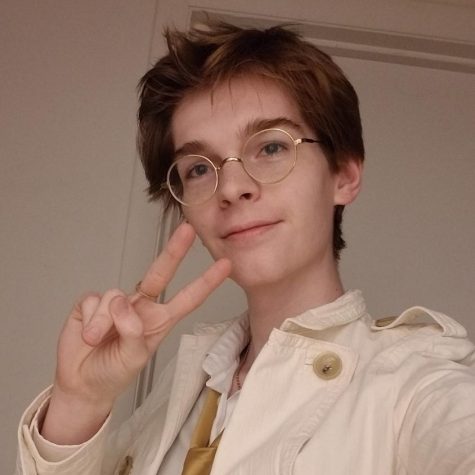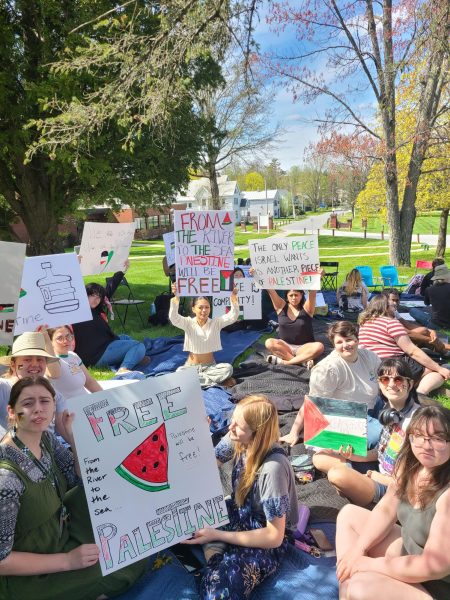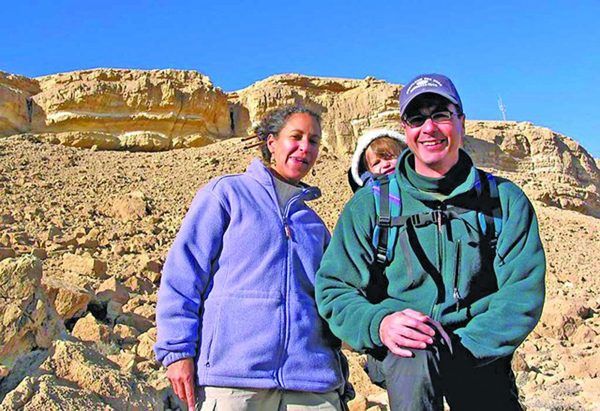Why?
It was Tuesday, Sept. 21, at around noon. I was in the Basement Medicine office, doing last minute work to clean up our first issue for the semester which was releasing just two days later. The room was quiet, a hum of the ventilation and the whirring of a desk fan the only sounds around me.
An email set off my laptop, and as the Outlook chime slipped into silence, I found myself reading an announcement from the chancellor. The next thing I heard was my own voice — low, stilted and bearing a slight chuckle of peeved bewilderment as I unleashed a slew of curses and shouted rhetorical questions at my screen.
This was my reaction to learning that the VSC Board of Trustees would be voting on the name for the unified entity in just over a week. The name under consideration? Vermont State University. Because of course it was.
For those who don’t know, this name was first floated over 18 months ago, when unification had just been announced and NVU’s community was still reeling from the threat of closure that seems to be regularly directed at the Johnson and Lyndon campuses.
It was proposed alongside the Labor Task Force’s recommended unification methods, which were ultimately shot down in favor of the NCHEMS proposal, because apparently the students, faculty and staff which comprise the VSC community can’t be trusted to make their own decisions.
Looking back at this initial decision — NCHEMS over LTF — I can’t help but wonder if it should have served as a better warning for what was to come: a slew of money being funneled out of state in consolidation efforts which likely could have been conducted in-house, or at the very least, in Vermont.
This recent name suggestion was forwarded by VisionPoint Marketing, a consulting firm hired by the VSCS to conduct research into the new university’s branding and naming. VisionPoint was hired in June and the presentation of their findings were paltry at best.
Alongside the name announcement came a great touting of rural community values and loyalty to our state. I can’t help but notice the irony that VisionPoint is based out of Pennsylvania, NCHEMS is in Colorado, and rpk GROUP — which made program array optimization suggestions — is from North Carolina of all places.
I asked about this dissonance at the Chancellor’s town hall meeting the next day, and I was told by Chancellor Zdatny that finding groups and vendors willing to provide these services can be difficult given the size of the state.
Yes, Vermont is rural, with low populations and an emphasis on smaller, local operations. However, if this is the same model which the VSCS claims to want to support and embody, then why are we throwing hundreds of thousands of dollars out of the local economy?
The VSCS seems quite passive in its dedication to the place supposedly essential to our marketing strategy. There has been heavy use of the phrase “Vermont is our campus,” this being commandeered from CCV, though it seems we needed to throw money at VisionPoint for them to remind us of its presence on the vsc.edu home page.
And while it’s by no means extensive research, a quick web search for “Vermont marketing firm” returns plenty of results — surely one or several of these companies could have been hired, and likely at a fraction of the cost that was spent on VisionPoint.
I also have to wonder if the quality of the research and resulting presentation would have been greater had a local entity with the context to understand the role the VSCS plays in Vermont’s culture and economy were hired.
The VisionPoint PowerPoint was a pitiful excuse for a study. After three months of siphoning funds from our transformation budget, the best they could produce were 23 slides, eight of which had more information about the slideshow itself than the recommendation or work they had done.
Again, I was told at the Board’s forum by Chancellor Zdatny as well as Director of Marketing Sylvia Plumb that this research covered only the naming of the new university, and that further work into branding and identity was both still being conducted and currently unreleased.
I hope that this work is of vastly improved substance over the name recommendation, and I hope that we, as the students, staff and faculty of these institutions, are given the decency of full and comprehensive data that is being used to determine our future.
This lack of clarity and almost negligent distribution of information is an aggravating trend — from the paragraphs of useless summary spewed every two weeks in the transformation updates, to the function of the newly forming Student Advisory Council.
I asked at the meeting if all students would be allowed to attend meetings, even if they weren’t official council members, to which I received a firm no. These are closed sessions in which only privileged individuals may be given information and the chance to speak their minds.
I then asked how we as students can genuinely expect to have these individuals — who were selected by the VSCS rather than voted on by their peers — to adequately represent us. At the time of this writing, I’m not even sure who our representatives are, and I need to write an article covering their work for the next issue of Basement Medicine.
I was told this was a good question, and that it had not been thought about. Clearly. I feel as if the upper levels of administration have become a void — from which little to no information is released, and by which the acknowledgement of our voices is impossible to determine.
The transformation update from Sept. 27 acknowledged that greater clarity is needed regarding how consolidation work is being conducted. I hope the board and chancellor’s office both make good on this declaration, or it will be just another empty sentiment slung idly into our inboxes, with the lingering uncertainty and seeming deafness to our concerns leaving us with a question I am exhausted of asking.
Why?

Senior, Creative Writing
From Fletcher, VT
Spring 2020-Present
"Call me mommy and I'll bring you blankets and hold you while you cry."






